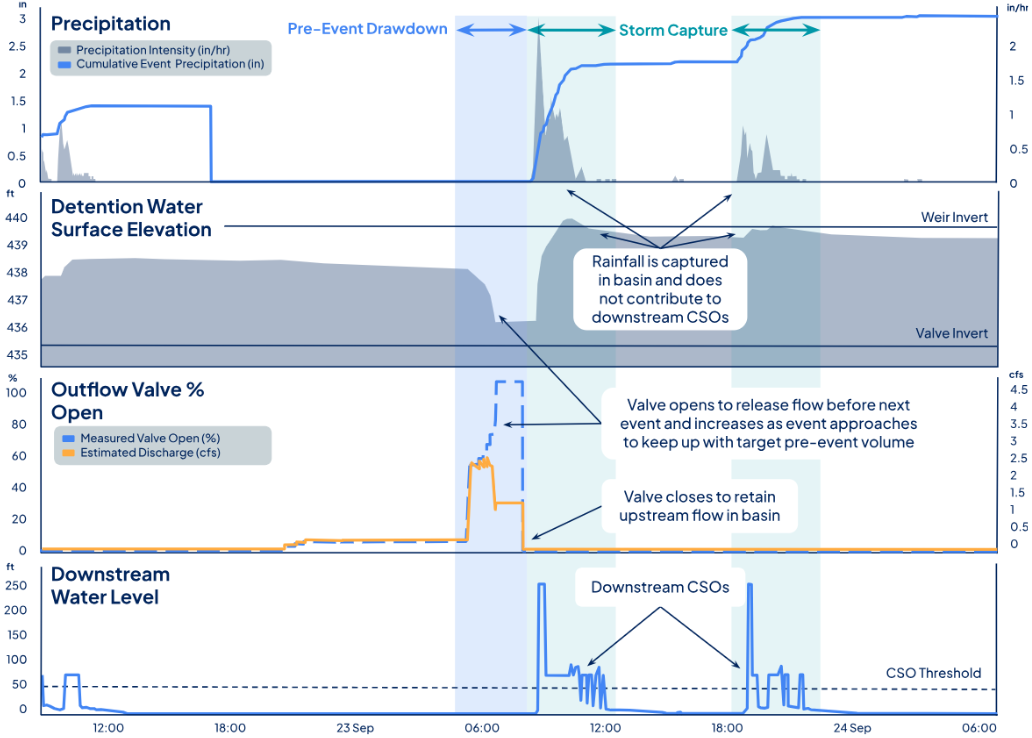.png)



The Challenge
Combined sewer overflows (CSOs) remain a significant environmental challenge in many urban areas, often resulting in the discharge of untreated wastewater and stormwater into waterways during heavy rainfall events. Traditional mitigation strategies, such as sewer separation, are typically expensive and disruptive. This is true for St. Louis, MO as well, where The Metropolitan St. Louis Sewer District (MSD) needed a cost-effective solution that could mitigate CSOs, expand infrastructure capacity, and provide real-time visibility and control of their stormwater infrastructure.

The Solution
MSD implemented an Opti continuous monitoring and adaptive control (CMAC) system at the North Pointe detention basin to strategically manage the release of stormwater to the CSO network. Opti collaborated with ADS Environmental Services (ADS) on an API data integration. ADS provided the critical foundation of continuous level and flow monitoring, while Opti focused on adaptive control elements. The combined solution is hosted on a robust software platform with advanced data visualization and analysis capabilities, coupled with essential field monitoring and control hardware.
The Results
The system at North Pointe demonstrated significant improvements in stormwater management:
- 82% of wet weather runoff was captured with the CMAC system compared to only 10% in a passive system.
- Peak flow rates were reduced by 85% (30.3 cfs for passive system vs. 4.6 cfs for CMAC system)
This case study demonstrates the potential of predictive wet weather capacity management using CMAC as a sustainable and cost-effective solution for addressing CSOs in urban environments, offering a promising alternative to traditional, more costly and disruptive mitigation strategies. By orchestrating the release from multiple ponds, the system gains greater control over the timing and volume of flows released into the downstream sewer system, minimizing the impact on downstream facilities and significantly reducing the likelihood of CSO occurrences.



